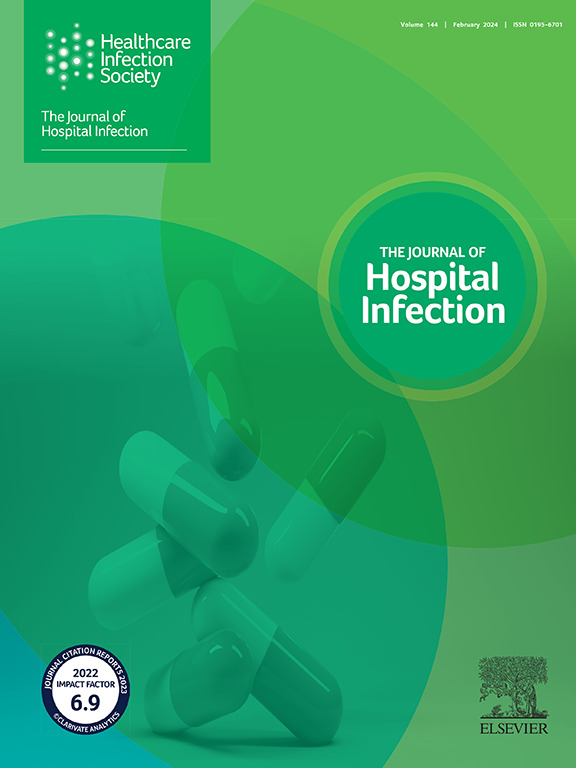指导抗菌药物选择的临床决策支持系统:2019年至2023年的叙述性回顾。
IF 3.9
3区 医学
Q1 INFECTIOUS DISEASES
引用次数: 0
摘要
背景:临床决策支持系统(CDSS)日益发展,以改善医疗服务。为了更新关于该主题的上一篇综述,我们进行了一项叙述性综述,旨在描述通过MEDLINE搜索发现的2019年至2023年抗微生物药物处方的所有CDSS。材料和方法:所有描述用于抗菌药物选择的CDSS的原始研究,包括抗生素、抗病毒药物、抗真菌药物和抗寄生虫药物,均符合条件。提取了CDSS目标及其潜在的临床影响,以及CDSS评估研究的特征(研究类型、人群、环境、目标和主要发现)。结果:在纳入的28项研究中,大多数(n=24)专门研究抗生素,15项研究嵌入电子健康记录。低收入和中等收入国家(LMIC)只开发了一个CDSS。纳入CDSS的主要目标是协助临床医生选择抗菌剂。10项研究纳入了1000多名患者或处方,其中大部分在医院进行。只有6项研究报告CDSS对抗生素使用或指南依从性没有影响。结论:用于抗菌药物处方的CDSS是一个日益活跃的领域,其解决方案提供了优化抗菌药物使用的潜力。虽然迫切需要发展CDSS,但CDSS的临床评估似乎是实施前的重要要求。需要作出特别努力,确保CDSS的可转让性和高采用率,特别是在低收入和中等收入国家,同时通过教育和培训提高认识。本文章由计算机程序翻译,如有差异,请以英文原文为准。
Clinical decision support system to guide antimicrobial selection: a narrative review from 2019 to 2023
Clinical decision support systems (CDSSs) are increasingly developed to improve healthcare delivery. To update the last review on this topic, we conducted a narrative review aimed at describing all CDSSs identified through searches of Medline dedicated to antimicrobials prescribing from 2019 to 2023. All original research describing a CDSS dedicated to antimicrobials selection, including antibiotics, antivirals, antifungals, and antiparasitic drugs, were eligible. CDSS goals and their potential clinical impacts, as well as characteristics of studies for CDSS evaluation (type of study, population, setting, objectives, and main findings) were extracted. Among the 28 studies included, most (N = 24) were dedicated to antibiotics and 15 were embedded in an electronic health record. Only one CDSS was developed in low- and middle-income countries (LMICs). The main goal of the included CDSSs was to assist clinicians in the selection of antimicrobials. Ten studies included more than 1000 patients or prescriptions, and most of them were implemented in hospitals. Only six studies reported no impact of CDSSs on antibiotic use or compliance with guidelines. CDSSs dedicated to antimicrobial prescribing is an area of increasing activity, with solutions offering the potential to optimize antimicrobial use. Although there is an urgent need to develop CDSSs, CDSS clinical evaluation appears to be an important requirement before implementation. Special efforts are needed to ensure transferability of CDSSs and high adoption, especially in LMICs, while improving awareness through education and training.
求助全文
通过发布文献求助,成功后即可免费获取论文全文。
去求助
来源期刊

Journal of Hospital Infection
医学-传染病学
CiteScore
12.70
自引率
5.80%
发文量
271
审稿时长
19 days
期刊介绍:
The Journal of Hospital Infection is the editorially independent scientific publication of the Healthcare Infection Society. The aim of the Journal is to publish high quality research and information relating to infection prevention and control that is relevant to an international audience.
The Journal welcomes submissions that relate to all aspects of infection prevention and control in healthcare settings. This includes submissions that:
provide new insight into the epidemiology, surveillance, or prevention and control of healthcare-associated infections and antimicrobial resistance in healthcare settings;
provide new insight into cleaning, disinfection and decontamination;
provide new insight into the design of healthcare premises;
describe novel aspects of outbreaks of infection;
throw light on techniques for effective antimicrobial stewardship;
describe novel techniques (laboratory-based or point of care) for the detection of infection or antimicrobial resistance in the healthcare setting, particularly if these can be used to facilitate infection prevention and control;
improve understanding of the motivations of safe healthcare behaviour, or describe techniques for achieving behavioural and cultural change;
improve understanding of the use of IT systems in infection surveillance and prevention and control.
 求助内容:
求助内容: 应助结果提醒方式:
应助结果提醒方式:


